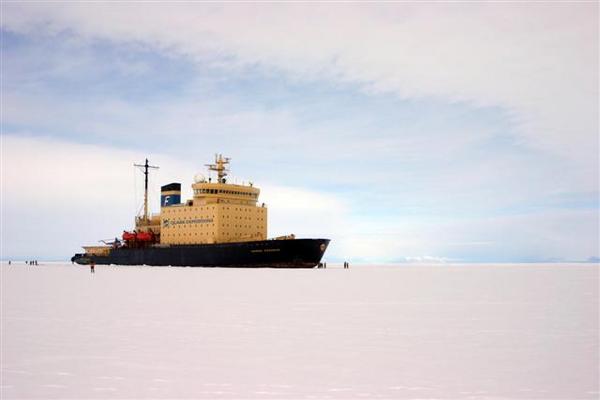
'Tis the Season to Visit Antarctica

If the talk about the 100th anniversary of the discovery of the South Pole has given you the travel bug, go ahead and cast your gaze south … all the way south. Right now is the middle of the Antarctic tourism season.
One hundred years ago on Dec. 14, Norwegian explorer Roald Amundsen became the first human to reach the South Pole. Today, 30,000 people travel to Antarctica each year during the continent's summer tourism season. As little as $3,000 will get you to the frozen continent; for $30,000, you can get there in style.
The International Association of Antarctic Tour Operators has more than 100 international companies that ferry adventurous passengers to one of the harshest environments on Earth.
Antarctica's wonders — the physical isolation, extreme climate and stunning wilderness — lure tourists from around the globe. Antarctica's modern tourist industry began in 1966, and that early model of linking tourism with education is still followed today by the majority of companies running tours to Antarctica.
According to the Antarctic tour group, 33,824 tourists visited Antarctica in 2010-2011. Americans had the biggest case of Antarctic fever, with 12,629 U.S. tourists traveling to the continent, 37 percent of the total trips. Australia was second, with 9.5 percent of the total trips, and Canada was third at 7.5 percent.
Education mission
Tourism in Antarctica began in the 1950s when guides from Chile and Argentina took more than 500 paying customers to the South Shetland Islands aboard a naval transportation ship. Education was a major theme then, and that emphasis drove Lars-Eric Lindblad to launch the first traveler's expedition to Antarctica in 1966. His tours gave a first-hand experience to tourists about the ecological sensitivity of Antarctic and how it influences the rest of the world.
Sign up for the Live Science daily newsletter now
Get the world’s most fascinating discoveries delivered straight to your inbox.
"You can't protect what you don't know," Lindblad once said.
In 1969, Lindblad built the "Lindblad Explorer," dubbed the world's first expedition ship. It was designed for carrying tourists to the Antarctic, and gave rise to the continent's modern tourism industry. Before the Lindblad ship, the only people on the continent were the early explorers, scientists and those seeking their fortune in the exploitation of seals and whales. [Infographic: Antarctica – 100 Years of Exploration]
By air or by sea
Today, tourism companies must have a permit to visit Antarctica, as required by the Antarctic treaty.Tourism season generally runs from November to late February, summer in the Southern Hemisphere.
Cruises are the most popular way to arrive. Most tourists depart from Ushuaia, Argentina. Some leave from New Zealand aboard an ice-breaker research vessel.
But passengers can't stroll off the cruise ship onto the continent; a raft or helicopter is usually required as a shuttle.
Flying straight to Antarctica is another option. Antarctica Sightseeing Flights, operated by Croydon Travel, have taken more than 30,000 people to Antarctica since 1994. Passengers fly aboard a Qantas Airbus A380 or 747-400 aircraft.
Once on the island, there isn't much to do except explore. Most people mountain climb, ski or visit the South Pole. Every year an adventure race is held on the frozen desert.
One unique experience awaits revelers aboard a New Year's Eve flight to Antarctica.
"On our New Year's Eve Midnight Sun Party Flight passengers will be the first to see the sun in the New Year," according to the Antarctica Sightseeing Flights website. "It is daylight at 12:01 a.m. as we sing "Auld Lang Syne" over the ice and dance in the aisles to a live jazz band."
- Scott's Last Expedition: Images from his Doomed South Pole Trek
- 100 Years On, Antarctic Science Going Strong
- North vs. South Poles: 10 Wild Differences
You can follow OurAmazingPlanet staff writer Brett Israel on Twitter: @btisrael. Follow OurAmazingPlanet for the latest in Earth science and exploration news on Twitter @OAPlanet and on Facebook.









